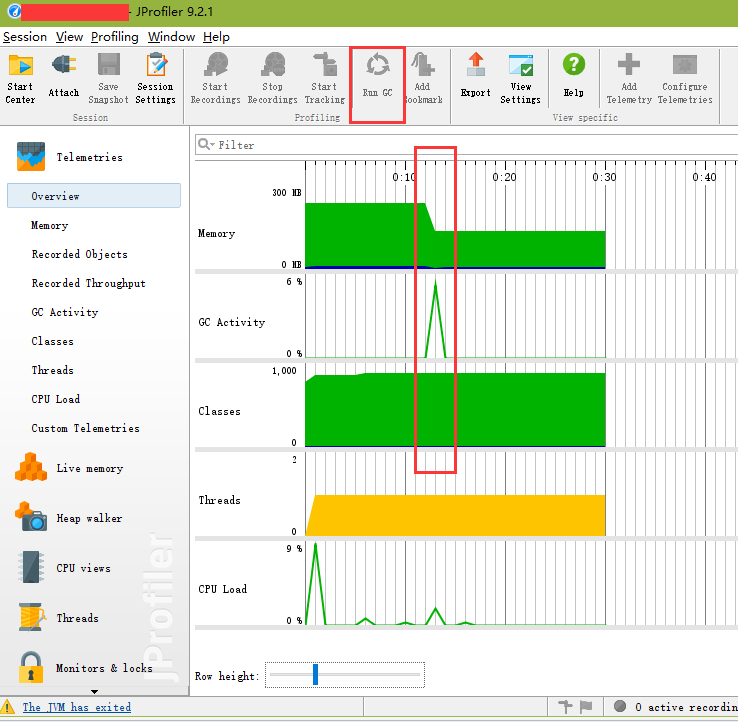初步探究java中程序退出、GC垃圾回收时,socket tcp连接的行为 |
您所在的位置:网站首页 › socket关闭流程 › 初步探究java中程序退出、GC垃圾回收时,socket tcp连接的行为 |
初步探究java中程序退出、GC垃圾回收时,socket tcp连接的行为
|
初步探究java中程序退出、GC垃圾回收时,socket tcp连接的行为 今天在项目开发中需要用到socket tcp连接相关(作为tcp客户端),在思考中发觉需要理清socket主动、被动关闭时发生了什么,所以做了一番实验,验证socket tcp连接在调用close、被GC回收、程序运行完毕退出、程序进程被杀掉时,tcp会产生什么行为。得出了一些结论,记录于此同时分享给大家。 先写出得到的结论: java程序运行完毕退出和被杀进程时,socket tcp连接会被关闭。而且是通过发送RST方式关闭tcp,不是四次挥手方式关闭tcp,不会进入TIME_WAIT状态。(一般在关闭异常连接时,使用发出RST复位标志的方式) 在socket对象被GC回收时,socket的close()方法会被调用,此时将使用四次挥手方式关闭主动tcp连接,随后进入一段时间的TIME_WAIT状态。主动调用socket的close()方法效果相同。 在使用new Socket(host,port)创建socket对象后,便会建立起tcp连接。
以上结论是个人测试得到的,如果有出入欢迎指正。 PS:下方是new Socket(host,port)构造方法的代码,结合上面结论第3条,可见在构造方法中第40行进行了一些业务逻辑。联想到前段时间广泛传播的《阿里巴巴JAVA开发手册.pdf》文档,其中有这样一条: 11.【强制】构造方法里面禁止加入任何业务逻辑,如果有初始化逻辑,请放在 init 方法中。 可见这个规则也不是处处适用的(至少此处jdk中Socket的构造方法就与这条规则相悖),在使用时考虑到团队协作、符合习惯等时考虑遵守这条规则。 1 /** 2 * Creates a stream socket and connects it to the specified port 3 * number on the named host. 4 *5 * If the specified host is {@code null} it is the equivalent of 6 * specifying the address as 7 * {@link java.net.InetAddress#getByName InetAddress.getByName}{@code (null)}. 8 * In other words, it is equivalent to specifying an address of the 9 * loopback interface. 10 *11 * If the application has specified a server socket factory, that 12 * factory's {@code createSocketImpl} method is called to create 13 * the actual socket implementation. Otherwise a "plain" socket is created. 14 * 15 * If there is a security manager, its 16 * {@code checkConnect} method is called 17 * with the host address and {@code port} 18 * as its arguments. This could result in a SecurityException. 19 * 20 * @param host the host name, or {@code null} for the loopback address. 21 * @param port the port number. 22 * 23 * @exception UnknownHostException if the IP address of 24 * the host could not be determined. 25 * 26 * @exception IOException if an I/O error occurs when creating the socket. 27 * @exception SecurityException if a security manager exists and its 28 * {@code checkConnect} method doesn't allow the operation. 29 * @exception IllegalArgumentException if the port parameter is outside 30 * the specified range of valid port values, which is between 31 * 0 and 65535, inclusive. 32 * @see java.net.Socket#setSocketImplFactory(java.net.SocketImplFactory) 33 * @see java.net.SocketImpl 34 * @see java.net.SocketImplFactory#createSocketImpl() 35 * @see SecurityManager#checkConnect 36 */ 37 public Socket(String host, int port) 38 throws UnknownHostException, IOException 39 { 40 this(host != null ? new InetSocketAddress(host, port) : 41 new InetSocketAddress(InetAddress.getByName(null), port), 42 (SocketAddress) null, true); 43 }
验证时,使用的工具: windows cmd命令行,“netstat -ano|findstr 9911”命令(9911是我测试时连接的对方服务器端口),用以查看tcp连接情况,包括tcp是否存在,以及处于TIME_WAIT、ESTABLISHED或者别的状态; wireshark,抓包详细查看tcp中传输的数据包; JProfiler,java性能分析工具,我在使用时和IDEA做了集成,这里用它的主要目的是手动触发GC,以及验证是否进行了GC。具体验证过程: 使用以下测试代码 1 public static void main(String[] args) throws Exception { 2 main2(); 3 System.out.println("调用结束"); 4 Thread.sleep(15000); 5 System.out.println("退出程序"); 6 7 } 8 9 public static void main2() throws Exception { 10 11 System.out.println("启动"); 12 Thread.sleep(5000); 13 System.out.println("创建socket对象"); 14 Socket socket = new Socket("123.56.113.123", 9911); 15 System.out.println("socket.isConnected() = " + socket.isConnected()); 16 System.out.println("socket.isClosed() = " + socket.isClosed()); 17 Thread.sleep(5000); 18 System.out.println("获取输出流"); 19 OutputStream outputStream = socket.getOutputStream(); 20 System.out.println("socket.isConnected() = " + socket.isConnected()); 21 System.out.println("socket.isClosed() = " + socket.isClosed()); 22 System.out.println("即将退出"); 23 // socket.shutdownOutput(); 24 Thread.sleep(5000); 25 System.out.println("退出"); 26 27 }为了方便在执行不同的操作之间,进行手动的tcp连接情况查询,代码中加了一些sleep()。 测试方案1,程序正常执行,不手动GC,不杀进程: 在14行之前,没有创建tcp连接; 14行创建了Socket对象之后,tcp连接就已经建立了,此时socket.isConnected()为true,socket.isClosed()为false; 19行执行时,没有发现tcp中有任何数据传输,说明获取输出流是不需要网络层的动作的; 19行之后,程序退出之前,tcp一直是ESTABLISHED状态(前提是这期间没有发生过GC); 程序退出后,tcp连接马上消失(没有进入TIME_WAIT状态),通过抓包查看是主动发出了RST(发出RST reset复位标志,一般是关闭异常tcp连接的方法)。
以下wireshark抓包的截图中序号为1-4的包,是上述过程产生的。
测试方案2,tcp连接建立之后,程序退出前,杀掉进程: 和方案1中的效果相同,上图中5-8号包是方案2产生的。杀掉进程时,会主动发出RST关闭tcp连接。 测试方案3,tcp连接建立后,GC回收socket对象: 触发GC的方法,是使用JProfiler的Run GC按钮,触发GC,如下图,内存变化说明确实进行了GC。
具体测试的设计,socket对象是main2方法中的局部变量,在main2执行结束后便可以被回收。 在测试中,第2、3行代码执行完之后,我点击Run GC按钮,预计socket对象会被回收。 此时用“netstat -ano|findstr 9911”命令查看,如下图,tcp已经由ESTABLISHED状态变为TIME_WAIT状态。 直到程序结束退出,仍然是TIME_WAIT状态。(正常情况下,TIME_WAIT状态会持续MSL时间的2倍,即报文最大生存时间的2倍,Windows下默认为4分钟)
实际上,在GC时会调用socket的close()方法,导致主动关闭tcp,进入TIME_WAIT状态。参考 java - If the jvm gc an unclosed socket instance what would happen to the underlying tcp connection? - Stack Overflowhttps://stackoverflow.com/questions/25543149/if-the-jvm-gc-an-unclosed-socket-instance-what-would-happen-to-the-underlying-tc 在Socket的成员变量中有SocketImpl类型的变量impl,impl实例化的实现类都是直接或间接继承java.net.AbstractPlainSocketImpl的,AbstractPlainSocketImpl中有如下方法: 1 /** 2 * Cleans up if the user forgets to close it. 3 */ 4 protected void finalize() throws IOException { 5 close(); 6 }在GC时,impl的finalize方法会被调用,这时候就相当于调用了socket.close(),所以tcp被正常地主动关闭(socket.close()内的代码也是调用impl.close(),只是额外加了线程同步控制代码)。 测试方案4,主动调用socket.close()关闭tcp连接: 即将第23行代码取消注释,替换为socket.close(),或socket.shutdownOutput() ,测试结果均和方案3的一致,close或shutdownOutput之后tcp关闭,端口进入TIME_WAIT状态。
以上是本次测试验证的过程,对java程序退出、GC回收socket对象、被杀进程、主动close时对tcp影响的初步探究,如有错误、疏漏还请斧正。
转载请注明出处:http://www.cnblogs.com/zhangdong92/p/7056539.html |
【本文地址】
今日新闻 |
推荐新闻 |


